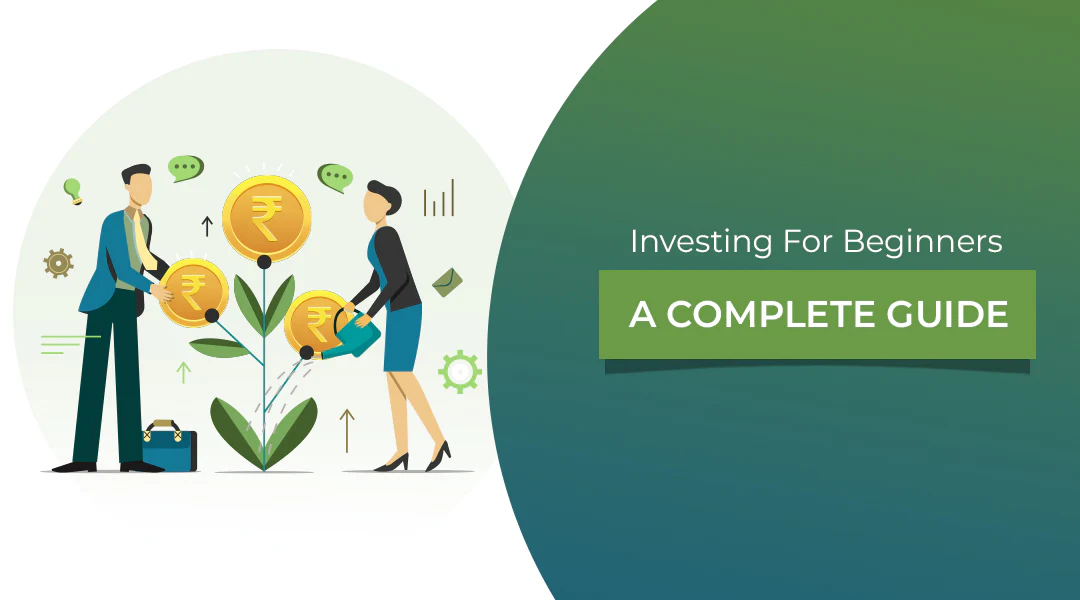One of the most powerful types of investments for growing money is usually sophisticated and overwhelming to a newbie. Loads of choices, a jargon of words, and loads of risk come attached to it. Not necessarily does a few minutes of learning and waiting start an initiator on his way toward financial prosperity. Here comes a beginner’s guide, which takes beginners through all phases from basic concepts to actually doing the investment.
Why Invest?
You need to understand why investing is important before moving on to how one does it. It is such that makes money work for you. This makes the invested money work by going out to increase value; use that value to grow your wealth, build a retirement savings plan, or serve other purposes for achieving other financial goals.
Next part summarizing why one has to put in some money. Very important reason why it’s essential to make that investment.
Beating Inflation. The money value of everything that one can purchase gets washed away by inflation. Even in your saving account you are certainly not beating this inflation. Through an investment, money will come up quite fast which beats off to the inflation faster than the last.
Compounding Growth: Generally, the longer your money sits on top of any interest, the better off you will be. It is essentially a period of interest paid on an initial investment then interest compounded by that interest for some term of time.
Financial Security: Invest in your potential and in the opening of channels into the streamlining of a passive income. Which could be in the form of dividends or interests owed to either stocks and bonds paid periodically all of which further build upon and diversify your variety of sources of income
The Fundamentals of Investing
You can’t start without some basic concepts
Risk vs. Reward
You are risking when you invest. In simple words, higher returns indicate higher risks or vice versa. Low risks mean low returns. Finally, all this depends upon the balance being right depending on what your objectives or time horizons are as well as how much you have to risk.
Investment Categories
There are many varieties of investment. Here’s a simple rundown of few of the most common types:
Stocks : Here you purchase the shares of a firm. At times they could be extremely volatile but big rewards.
Bonds: They are paper securities representing debts. When a bond is sold, money one borrowed to a large organization; whether government or else owes it fixed interest over sometime and also your capital on full term being attained. Their returns are less as compared to stock.
They provide diversification and professional management but often come with fees.
ETFs: These are termed as Exchange-Traded Funds. ETFs are almost similar to mutual funds except that instead of investing into a fund based on stocks, bonds, and other assets, they trade on the stock market like an individual stock and do not have any established net asset value that traditional mutual funds have.
Diversification
It means spreading your investment in diversified securities so that the whole type of risk will reduce and almost nullify all kind of spill-over in your account. Then you take the locked cash in a particular stock and invest money in a mutual fund or ETF wherein all those funds and bonds and etc hold.
Time Horizon:
You and I should know the horizon that we are on; it is the term in which we require the money. Short-term focus would have you save with less risky options since such funds may be required later on perhaps in 1 or 2 years. When one takes long periods, say retirement, you have the whole lifetime to get up again when the market gives you some downturn. Conclusion and Investment Steps
Now that you know what to invest in, here are the steps that guide you in getting started.
1. Clear Financial Goals
Before starting your investment, know what you are saving for. Is it retirement, a house, or a child’s education? Clear goals will help guide your investment decisions and determine your risk tolerance.
2. Emergency Fund
Invest once you have a savings emergency. The old adages told by financial gurus recommended that one save for three to six months worth of living expenses into a savings account. This was just in case other untimely expenses occurred or to avoid the loss of an income source.
3. Be away from high interest loans
Even investment, although very necessary to have, needs to weigh the urgency of having it cleared off of this highly interest-bearing credit card account, most probably earning pay much faster than that earned with your investment. That thus has been a light baggage enough to be erased off in order to allow itself enough space to look out to invest.
4. Invest in an Account
Investor ready to put that cash to work in something tangible? Open up that account. There are only two mainstream accounts:
Taxable Brokerage Accounts: Not tax-preferred but very flexible because you can access your money anytime without penalty.
Retirement Accounts (IRAs, 401(k)s): This account offers a tax advantage but with restrictions of when and how you are allowed to access your money.
5. Start with Low-Cost, Diversified Investments
It is logical to get started with diversified low-cost investment options, which may be index funds or ETFs that track a broad market index-for example, S&P 500-and hence you automatically invest in a wide range of stocks, and with an inbuilt feature of automatic diversification; they normally come low in fees as well so much money comes into your pocket.
6. Automate Your Investments
Most convenient discipline in investing is automatic contribution. In this process, you can now invest without necessarily having a huge chunk at one go; one just makes a small amount for every month.
7. Stay the Course
Long-term strategy is investment. There’s always the temptation to make rash decisions in short-term market moves. You have to hold to your plan and allow time for the investments to mature.
Common Mistakes to Avoid
Chasing Hot Stocks: It is really hard not to get tempted by the short-term market hype when buying individual stocks. You want to invest in the latest hot trend, but individual stock purchase in the short term is always a risk. Diversification and a long-term approach are your best bet.
It is almost impossible even to the best investment professional for one to buy low and sell high. Time in the market more often overshadows timing the market.
Fees Failure to keep track of fees bleeds into the returns if one fails to keep track. Keep tab on fees investment products extract from you especially with an actively managed mutual fund
What matters most?
Take that first step-whether it is an investment account, setting a budget, or doing research about choices. You will get there if you start early and keep yourself disciplined so be careful in the creation of your road to long-term financial success.
Invest wisely. It is a journey; it requires patience and constancy. It will grow with time, and the future seems brighter while waiting.




